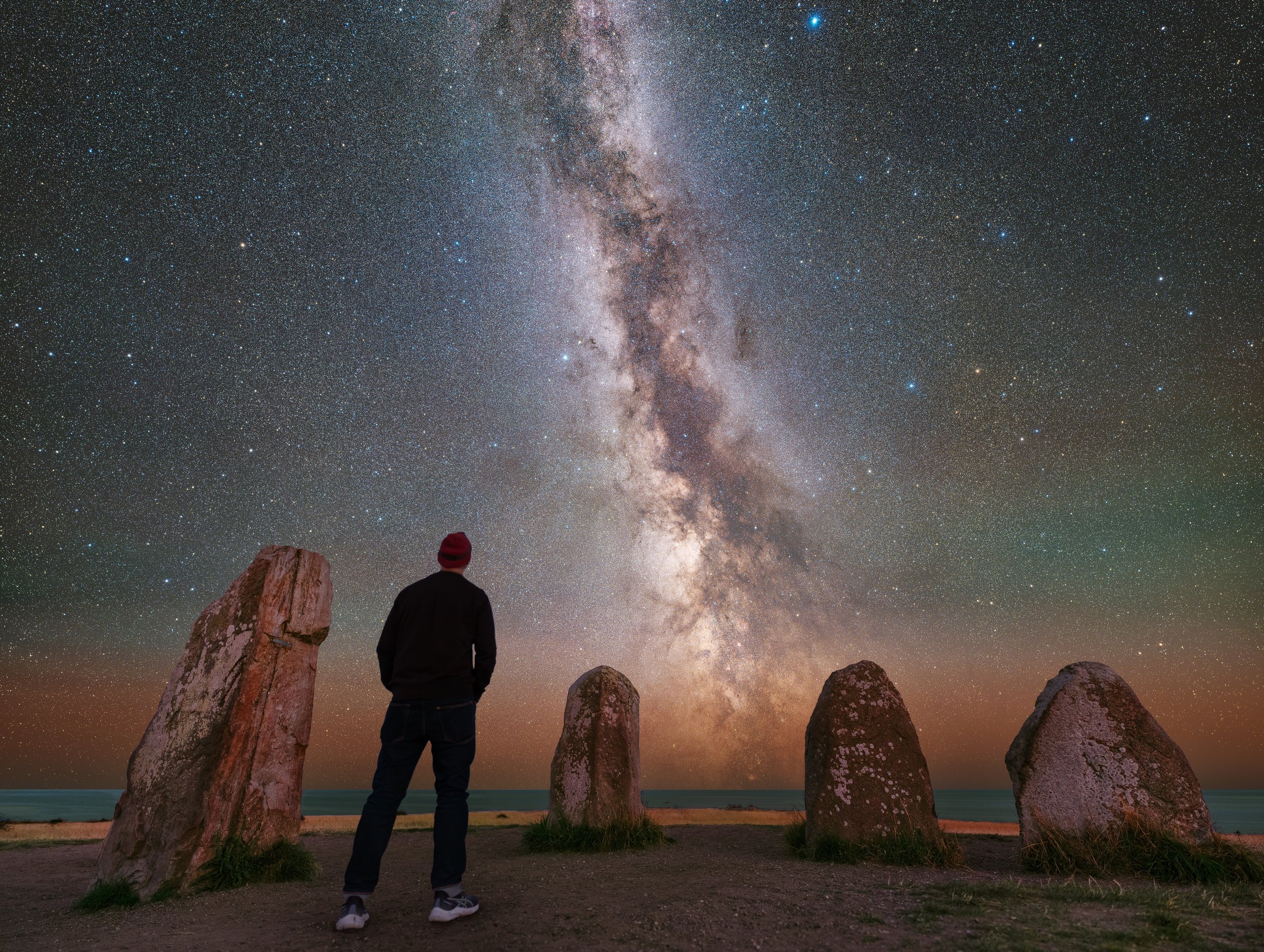
NIGHTSCAPE PHOTOGRAPHY
Nightscape photography is a captivating blend of landscape photography and astrophotography, where the beauty of the night sky meets the terrestrial world. It focuses on capturing landscapes under a starry sky, often incorporating features such as mountains, forests, or man-made structures into the composition. The goal is to create an image that harmoniously showcases the grandeur of the cosmos alongside the Earth’s natural or built environment.
Unlike deep-sky astrophotography, which requires telescopes to focus on distant celestial objects, nightscape photography can be done with standard camera gear. All you need is a DSLR or mirrorless camera, a sturdy tripod, and a wide-angle lens to get started.
Nightscape photography allows photographers to explore the profound connection between Earth and the cosmos, making it a favourite entry point for many who are new to astrophotography.
Nightscapes often feature:
Starry Skies: Whether it’s a field of glittering stars, constellations, or the Milky Way stretching across the heavens, the night sky is the main backdrop.
Foreground Elements: Landforms like mountains, trees, lakes, or even cityscapes add context and depth to the photograph.
Celestial Events: Shooting stars, auroras, or lunar phenomena can add dynamic elements to the scene.
Featured Video
In this video, I share my journey of photographing Comet C/2023 A3 Tsuchinshan-ATLAS under a bright, windy night with an almost full moon. I’ll walk you through how I captured the comet, the gear I used, and the editing steps that brought the final image to life.
To achieve pinpoint stars and a detailed image of the comet, I used a star tracker—a device that compensates for the Earth's rotation. This allows for longer exposures without star trailing, even when using a lightweight setup. In this episode, I explain how the tracker works, why it’s helpful, and how it improved my results in challenging conditions.
You’ll also learn some cool facts about comets—their anatomy, where they come from (the Kuiper Belt and the Oort Cloud), and how they can display three tails, including a fascinating anti-tail! Join me as I refine my nightscape photography skills and explore the beauty of the night sky.
Techniques for Stunning Nightscapes
To capture the magic of nightscapes, photographers use a variety of techniques, ranging from simple to advanced:
Basic Nightscape Photography: In its most basic form, nightscape photography can be done with a smartphone. Modern phones with night modes can capture the stars and even faint details of the night sky when used with a small tripod.
Using Dedicated Cameras: The next level involves using a DSLR or mirrorless camera equipped with a fast lens (wide aperture) mounted on a sturdy tripod. This setup allows for greater control over settings and results in sharper, higher-quality images.
Long Exposures and Star Trackers: To gather more light and achieve stunning long exposures, photographers often use star trackers. These devices compensate for Earth’s rotation, preventing star trails and allowing for sharper details in the night sky during longer exposure times.
Astromodified Cameras and Filters: Advanced users often employ astromodified cameras, which are altered to enhance sensitivity to specific wavelengths of light, particularly hydrogen-alpha (H-alpha). Combined with H-alpha filters, this technique brings out rich nebulosity and details in deep-sky objects, adding a unique depth to nightscape images.
Mosaics and Milky Way Panoramas: For expansive scenes, photographers can create mosaics by combining multiple images. This method is especially effective for capturing the Milky Way arch in stunning detail, offering a breathtaking, wide-angle view of the night sky.
Light Painting: Illuminating foreground elements with artificial light, such as flashlights or LED panels, can help to balance the scene, creating a harmonious blend of Earth and sky.
Post-Processing: Post-processing is crucial for nightscapes. Adjusting brightness, contrast, and colors enhances the interplay between the sky and landscape, while stacking and blending techniques reduce noise and bring out finer details.
By mastering these techniques, nightscape photographers can create captivating images that beautifully showcase the connection between the Earth and the cosmos.








